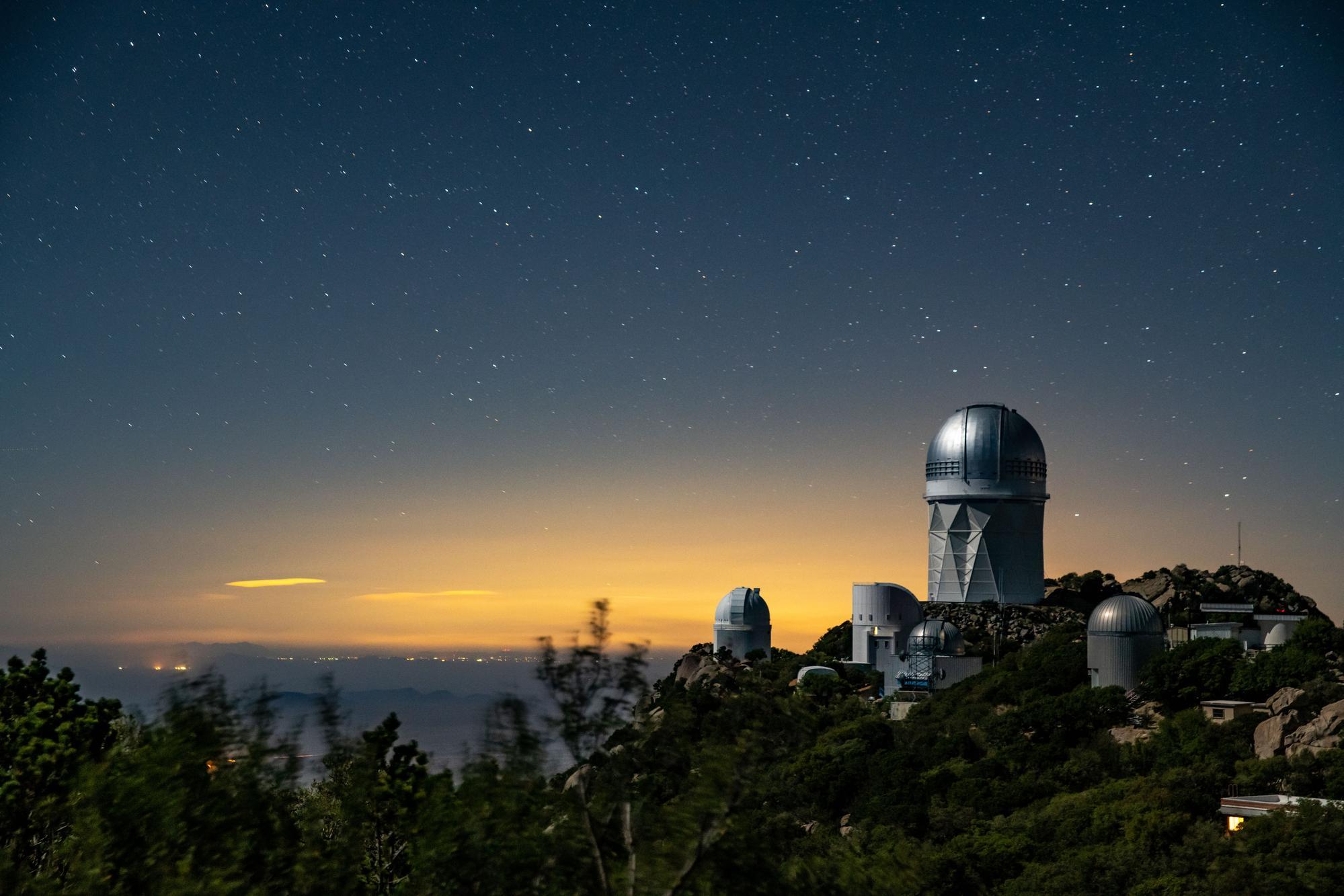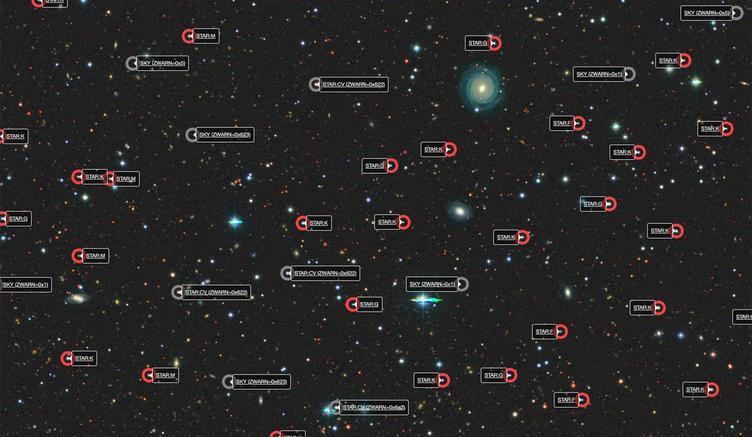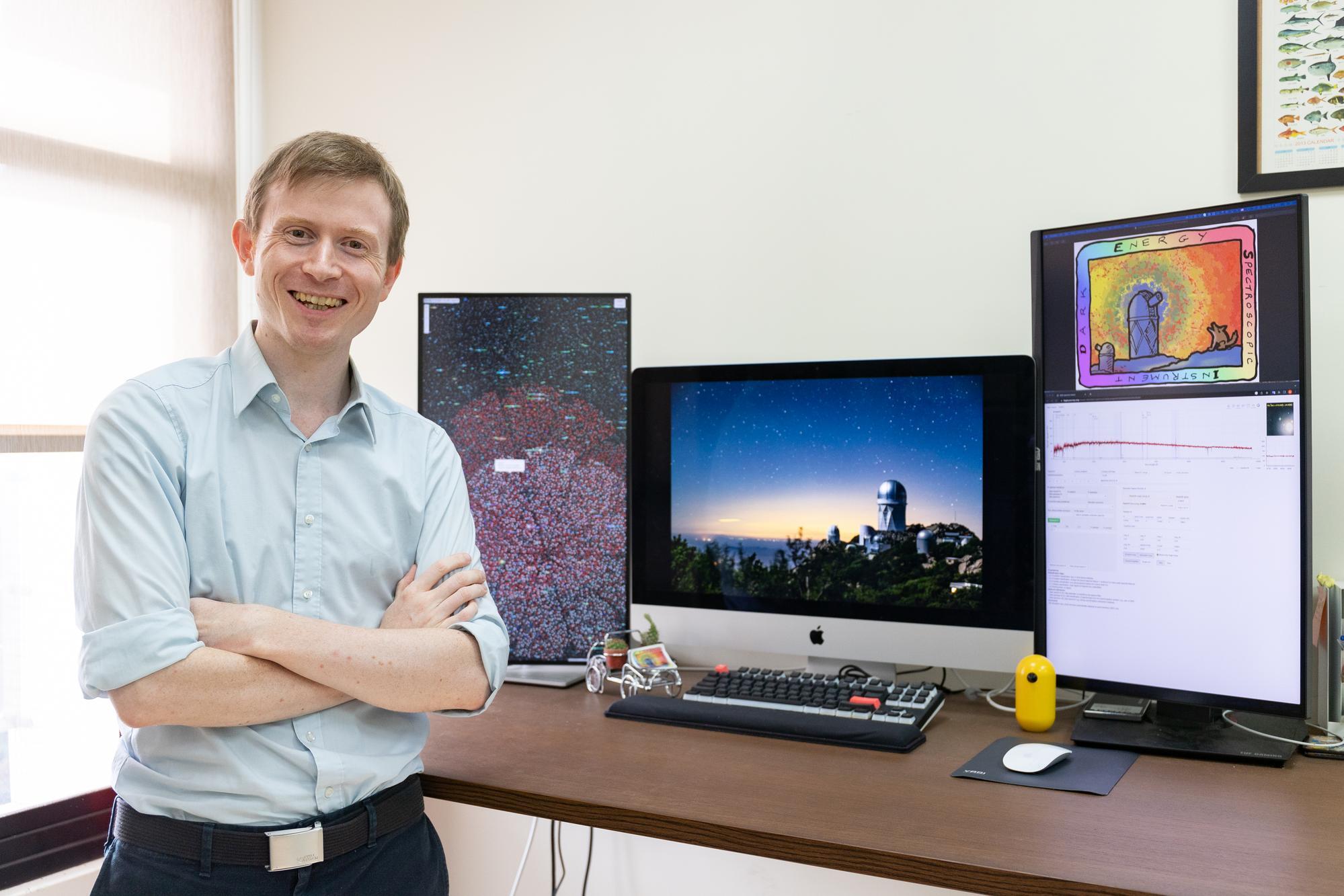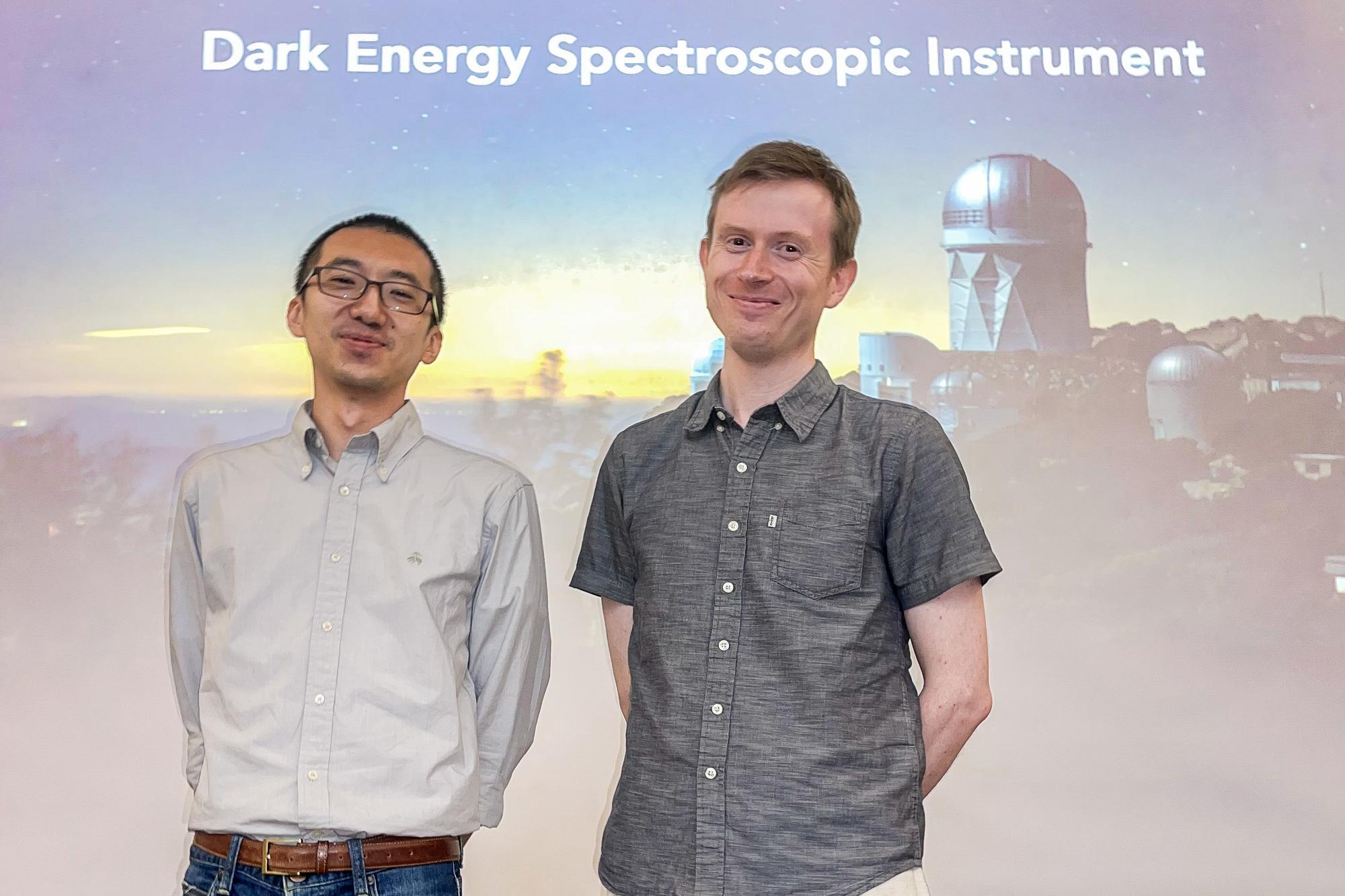2023.06.14
Assistant Professor Andrew Cooper from the Institute of Astronomy at National Tsing Hua University (NTHU) in Taiwan is involved in a project called the Dark Energy Spectroscopic Instrument (DESI), which brings together over 70 research institutions and hundreds of scientists and engineers from many countries. Today, they have made their first 2 million observations freely available for every astronomer in the world to explore.
“We're making a 3D map of the universe!” Dr. Cooper described. Simply clicking on a star in their map reveals what it is made of and how it is moving. Scientists can also use this map to gauge the distances between stars.
Led by the Lawrence Berkeley National Lab (LBNL) and funded by the US Department of Energy's Office of Science, DESI is the most ambitious project yet undertaken to measure the scale of the universe, and it will do so with unprecedented precision. By 2025, DESI is expected to observe more than 40 million galaxies and 10 million stars. These will include stars in the Milky Way galaxy, far-away galaxies, and even supermassive black holes.
Dr. Cooper said that, over the last 30 years, astronomers have discovered that the expansion of our universe is speeding up. This mysterious acceleration cannot be explained by any known physics. Scientists call this cosmic question mark “Dark Energy.”
To learn more about Dark Energy, an international team of researchers have collaborated to build a powerful new device called DESI at Kitt Peak Observatory in Arizona. After 10 years of planning and construction, DESI embarked on a mission to map the cosmos in 2021.
Dr. Cooper explained that DESI's focal plane consists of 5,000 robotic positioners, each holding a fiber-optic cable to gather the light from an individual star or galaxy. The back end of DESI is filled with sensors, acting as the “brain” of the device to process the collected spectral data. DESI possesses powerful observational and analytical capabilities, allowing it to observe thousands of objects and output high-quality astronomical spectra with remarkable efficiency.
Dr. Cooper added that, by analyzing these spectra, astronomers can learn about how fast the stars and galaxies are moving relative to Earth. They will use this information to explore the accelerating expansion of the universe. The spectra provide even more details about stars in the Milky Way, such as their temperature, mass, surface gravity and chemical composition.
In the DESI project, Dr. Cooper was one of the two leaders of the “DESI Milky Way Survey”. This team consists of over 30 astronomers from various countries and focuses on analyzing the spectra of stars in the Milky Way galaxy. The first release of the DESI data includes approximately 500,000 of these stars, and the research findings of the Milky Way team have been published in the Astrophysical Journal.
Dr. Cooper said that, although the Milky Way might be just one tiny galaxy among trillions, it is still very important because it is our home, and also our laboratory, where we can study lots of things in more detail than anywhere else.
For instance, astronomers believe the gravity of the Milky Way is primarily influenced by invisible dark matter. If the team can obtain enough spectra for a wide range of stars in the Milky Way, measuring their speeds in different directions and their chemical composition, DESI's 3D map of the Milky Way will allow them to test theories about the nature of the dark matter.
Dr. Cooper, an astronomer from the UK, specializes in astrophysics and galactic archaeology. In 2019, he was selected as a Yushan Young Scholar by the Ministry of Education and was recruited to NTHU as an assistant professor in the Institute of Astronomy. His area of expertise is numerical simulations of galaxy formation, which is not so common in the Taiwanese astronomical community.
The NTHU “Galactic Archaeology Team” led by Dr. Cooper has been involved in the DESI project for approximately four years. They are like cosmic archaeologist, dedicated to understanding how galaxies have evolved over the 13-billion-year history of the universe. The team working on DESI includes two doctoral students from the Institute of Astronomy, Namitha Kizhuprakkat from India and Li-wen Liao (廖俐雯), as well as Sy-yun Pu (蒲思云), an undergraduate in the Department of Physics.
The DESI project also involves another Yushan Young Scholar from Taiwan, Assistant Professor Ting-Wen Lan (藍鼎文) from the Institute of Astrophysics at National Taiwan University (NTU). He was responsible for coordinating a team of dozens of scientists to ensure that the DESI data were up to scratch. According to Dr. Lan, the information from DESI's measurements is more than 99% accurate.
Dr. Cooper pointed out that modern astronomy is a global endeavor, with researchers and scientists from diverse backgrounds working towards common goals. He said he was honored to participate in the DESI project alongside Dr. Lan. He also extended gratitude for the long-term support from the Ministry of Education, the National Science and Technology Council, NTHU, and NTU, which enables Taiwan to contribute to large international collaborations like DESI and train a new generation of young astronomers.
DESI is supported by the DOE Office of Science and by the National Energy Research Scientific Computing Center, a DOE Office of Science user facility. Additional support for DESI is provided by the U.S. National Science Foundation, the Science and Technologies Facilities Council of the United Kingdom, the Gordon and Betty Moore Foundation, the Heising-Simons Foundation, the French Alternative Energies and Atomic Energy Commission (CEA), the National Council of Science and Technology of Mexico, the Ministry of Science and Innovation of Spain, and by the DESI member institutions.
The DESI collaboration is honored to be permitted to conduct scientific research on Iolkam Du'ag (Kitt Peak), a mountain with particular significance to the Tohono O'odham Nation.

DESI was installed on the Mayall Telescope at Kitt Peak National Observatory near Tucson, Arizona. (top right of the dome) Photo courtesy of Marilyn Sargent, LBNL

The image represents a small portion of the released data, with each red circle representing a star. Clicking on a circle provides access to a wealth of astronomical information. (main photo) Photo courtesy of DESI Legacy Imaging Survey, D. Lang (Perimeter Institute)

DESI's focal plane consists of 5,000 robotic positioners, each holding a fiber-optic cable to gather the light from a single star or galaxy.Photo courtesy of DESI Collaboration

NTHU Assistant Prof. Andrew Cooper served as one of the two leaders for the “DESI Milky Way Survey”.

A Yushan Young Scholar, Dr. Andrew Cooper has been teaching in the Institute of Astronomy and Department of Physics at NTHU for four years.

Dr. Andrew Cooper hopes he and the team can obtain spectra of a very large number of stars within the Milky Way.

Led by Dr. Andrew Cooper (2nd right), the NTHU “Galactic Archaeology Team” includes Namitha Kizhuprakkat (right), Sy-Yun Pu (蒲思云) (2nd left), and Li-Wen Liao (廖俐雯) (left).

NTHU Assistant Prof. Andrew Cooper (right) and NTU Assistant Prof. Ting-wen Lan (藍鼎文) both participate in the DESI project.








